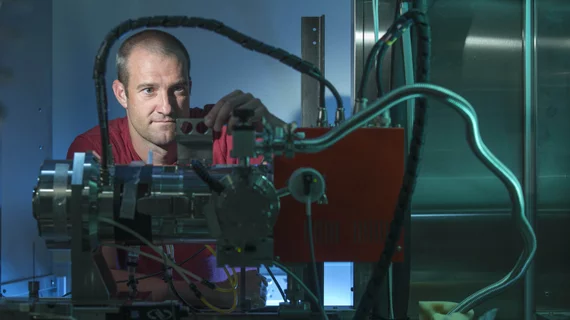New ghost imaging technique produces cheaper 3D x-rays, less radiation
Using a variation of an unconventional imaging approach called “ghost imaging," an international team of researchers has successfully taken low dose three-dimensional (3D) x-ray images which may help make screening for early signs of diseases and cancer cheaper, safer and more accessible.
Led by Andrew Kingston, PhD, from the Research School of Physics and Engineering at Australian National University (ANU) in Canberra, Australia, researchers used the technique to take 3D x-ray images with low levels of radiation of an object’s interior that was opaque to visible light, according to an ANU news release published Nov. 29.
"The beauty of using the ghost imaging technique for 3D imaging is that most of the x-ray dose is not even directed towards the object you want to capture—that's the ghostly nature of what we're doing," Kingston said in the statement.
The researchers' approach uses a sensor instead of a conventional x-ray camera to take a 3D ghost image of an object measuring 5.6 millimeters diameter at a relatively low resolution of 0.1 millimeters. With the sensor, the researchers developed a new ghost imaging measurement system that used x-ray beams with patterns, according to the release.
Specifically, each beam was split into two identical beams. The pattern was recorded in the first beam, acting as a reference measurement, and the second beam passed through the object with only the total x-ray transmission measured by a single sensor.
A computer was used to create a two-dimensional (2D) x-ray projection image of the object from the measurements and was then repeated with the object placed at different orientations to ultimately construct a 3D image.
"3D X-ray ghost imaging, or ghost tomography, is a completely new field, so there's an opportunity for the scientific community and industry to work together to explore and develop this exciting innovation,” Kingston said.
The research was published online in the December issue of the journal Optica.

